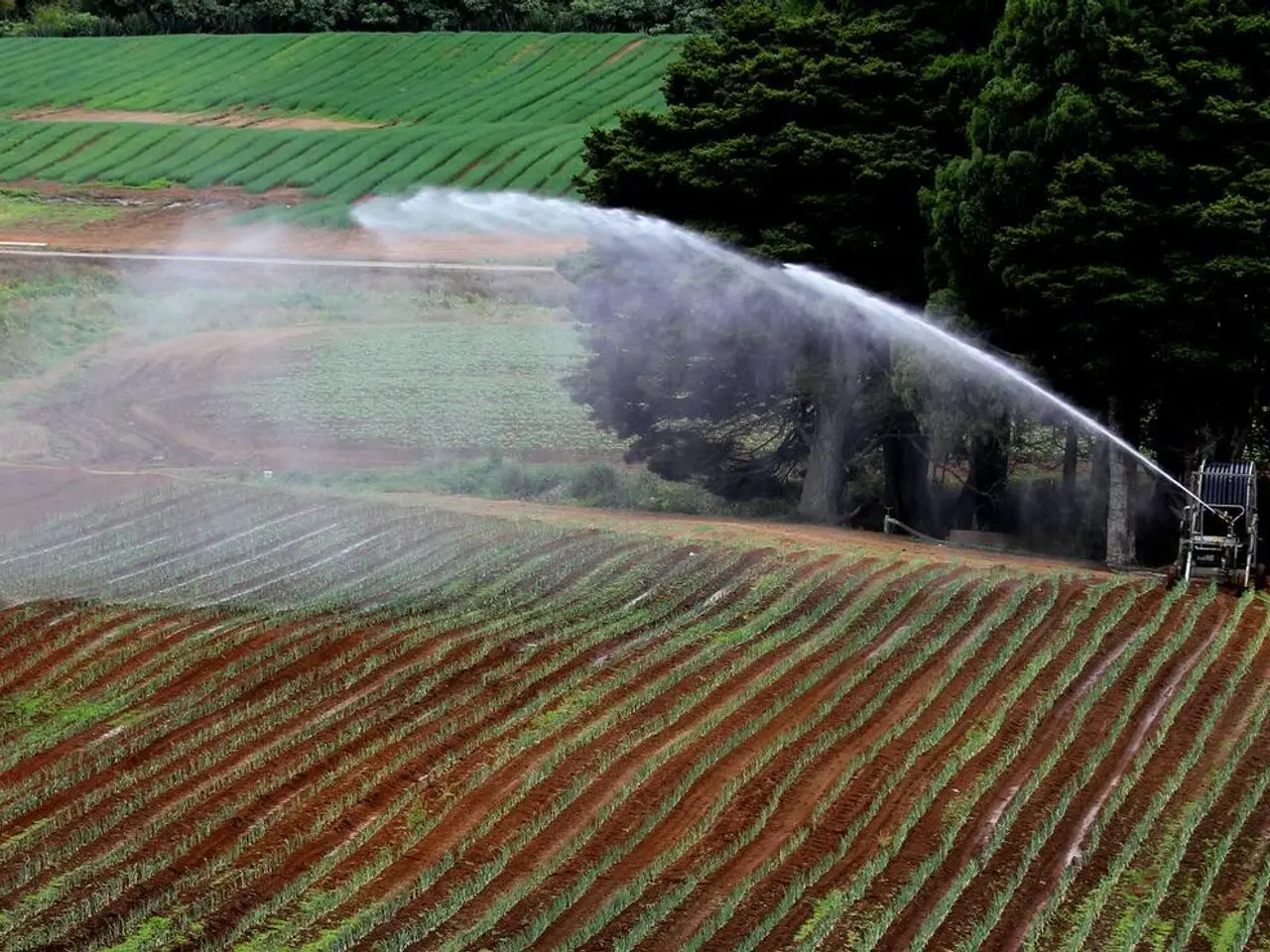Benefits and Drawbacks of Soil-Less Cultivation: Comprehensive Examination
Hydroponic farming is a modern method of growing plants without soil, using nutrient-rich water solutions instead. This farming technique is gaining popularity, particularly in urban areas, where space is at a premium.
One of the key advantages of hydroponics is its ability to eliminate the risk of soil-borne diseases like root rot. By growing plants in a closed system, farmers can control the growing environment and prevent the spread of diseases among multiple plants. However, growing plants in a closed system can also facilitate the spread of diseases if careful management is not practiced.
Hydroponics offers water conservation, faster plant growth, and the ability to grow in space-limited urban areas. It uses up to 90% less water than conventional farming methods by recycling nutrient solutions and minimizing water lost to evaporation and runoff. This water efficiency is critical given global water scarcity and contributes to sustainable resource management.
The elimination of soil use in hydroponics means it does not contribute to soil erosion, degradation, or contamination—common long-term issues in traditional farming. This preservation of soil health can be especially valuable in areas with poor or eroded soil.
However, hydroponics typically relies on manufactured nutrient solutions (often synthetic) and continuous electricity for pumps, lighting, and climate controls. This may result in a larger carbon footprint or other environmental impacts depending on energy sources and manufacturing processes. The energy use and material inputs affect the overall sustainability and require careful management to minimize negative impacts.
Hydroponic farming allows for increased crop yields and earlier harvests compared to soil-based methods. It also reduces the need for pesticides due to a controlled environment. However, incorrect nutrient levels can lead to crop toxicity or slow growth in hydroponic systems. Power outages can also harm hydroponic crops due to the reliance on electricity for water pumps, lights, and other tools.
Hydroponic tools, such as plastic pipes and artificial lights, can contribute to environmental pollution. However, plants in hydroponics can thrive in various substrates like perlite, coconut coir, or gravel. Hydroponic farming is space-efficient, especially in cities, due to vertical farming techniques.
In conclusion, hydroponics offers long-term environmental benefits over traditional soil-based farming through water conservation, soil preservation, and reduced chemical use. Nevertheless, its higher energy and synthetic input demands present trade-offs that need addressing for holistic sustainability. Initial setup costs for hydroponic systems can be high, potentially deterring new or small-scale farmers. Careful management of nutrients and the growing environment is necessary to ensure the success of hydroponic farming.
Vertical farming, a possible alternative to hydroponic farming, is another space-saving urban gardening method that stacks layers of plants vertically, often in home-and-garden setups. With both methods, the lifestyle benefits extend beyond healthier produce to offering a personal, rewarding hobby for enthusiasts interested in gardening.




